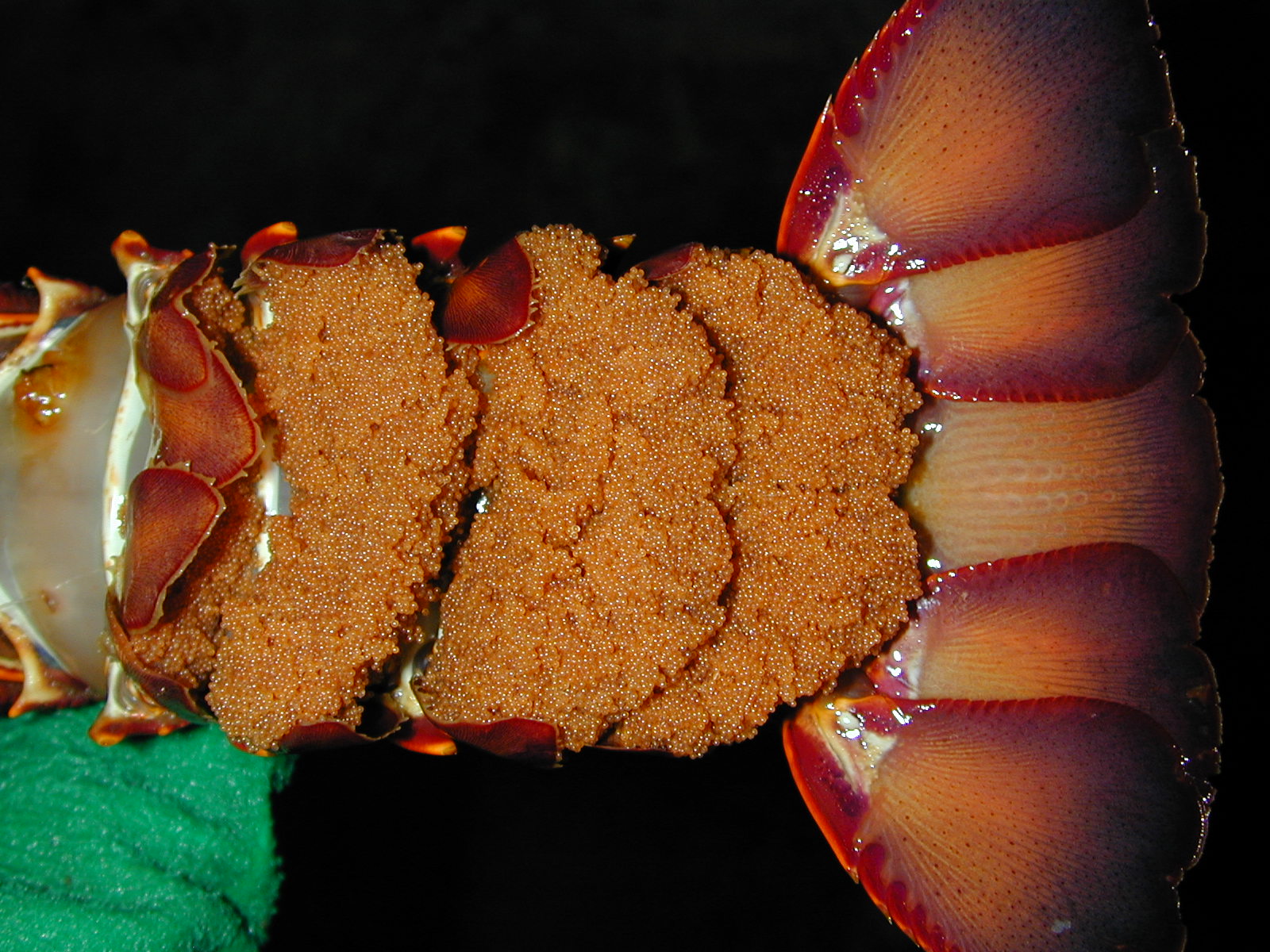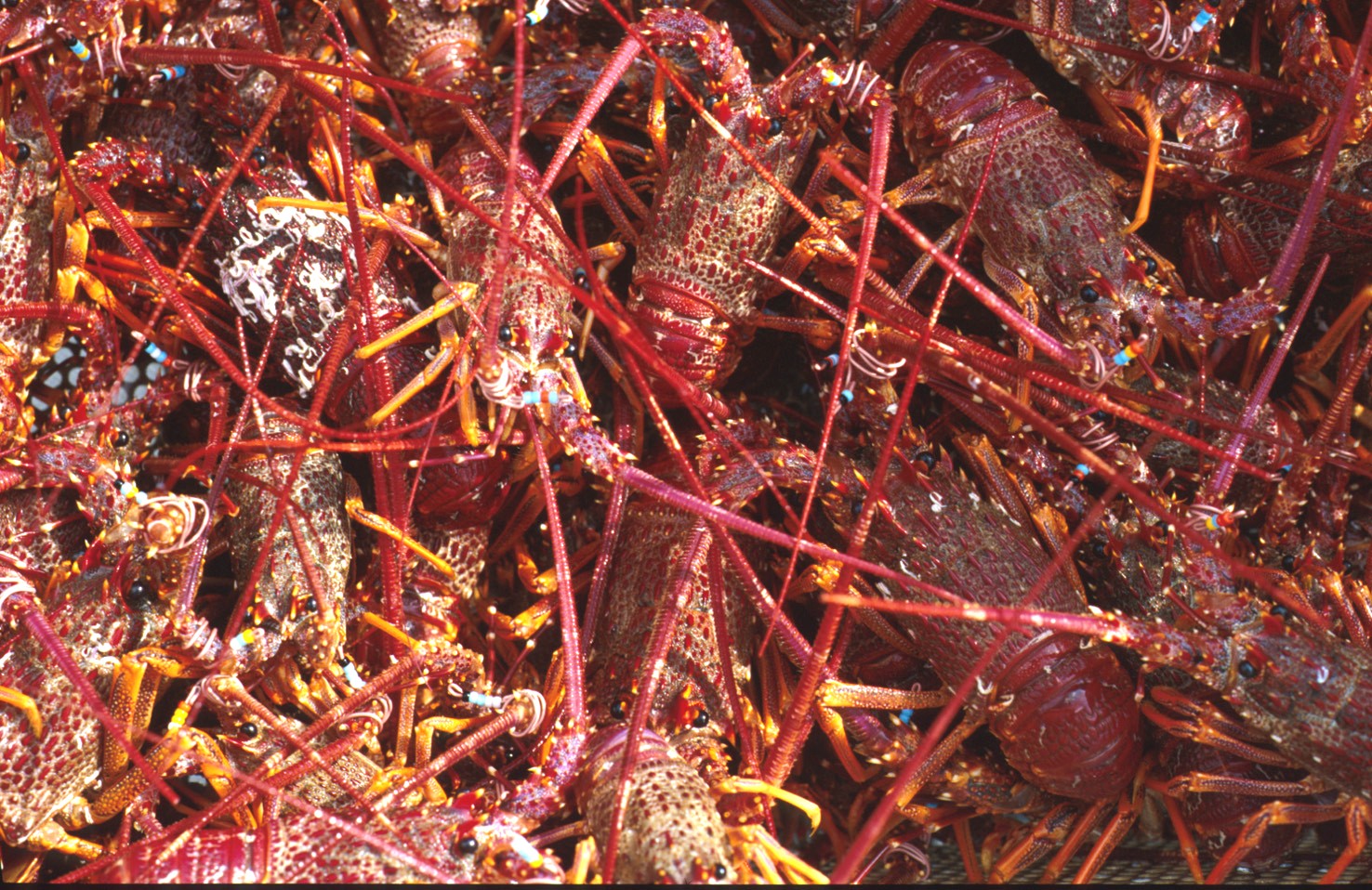Model Results
Egg Production
At current egg production levels, there is no clear link between egg production and subsequent recruitment to the fishery. This is due to the high variability inherent in the long larval duration phase (larvae spend up to two years drifting on the open ocean see the Recruitment page), plus high variability in survival between settlement and recruitment to the fishery. Nevertheless, there is inevitably some lower limit of egg production below which subsequent recruitment is likely to be significantly impacted (i.e., clearly at some level of depletion few adults results in few juveniles).
There are some key points to understand when considering the link between egg production and subsequent recruitment to the fishery:
- The planktonic larval stage is very protracted (1.5 – 2 years).
- Plankton sampling has demonstrated that larvae are not retained inshore on the continental shelf. Rather they live beyond the shelf in oceanic waters and are thus transported over large distances.
- There is no pattern in historical stock data between levels of egg production and future recruitment.
- Modelling of larval dispersal suggest many Tasmanian recruits originate from elsewhere (SA and VIC).
- Variation in current movement between years suggests that no one region is consistently important for larval supply and thus the source of larvae seems to vary between years.
Modelling of dispersal of lobster larvae has indicated that Tasmania benefits from larvae produced elsewhere, especially to the west, but there is also some degree of recruitment back to the state. It is also known from genetic studies that areas that are important as larval sources vary from year to year – a process termed “chaotic patchiness”. The accepted management response to this is to maintain egg production at reasonable levels in all regions of the State – the “eggs in many baskets” approach.
State-wide spawning biomass or egg production has increased over the last few years and is well above the 30% reference point. However, there is substantial spatial variation in egg production throughout the state. The south west areas 8 and 11 are near virgin spawning biomass. This is because lobster grow much slower in this area and females are below the size limit for most of their life. Female lobsters in other areas with faster growth are not afforded the same level of protection by the size limit. To address this regional management measures have been put in place. Areas 2 and 3 are being rebuilt as part of the East Coast stock rebuilding strategy. Area 4 has a catch cap. Area 5 and 6 have had an increase in the female minimum legal size.

A female rock lobster in berry carries 100 000 to 1 000 000 eggs attached to the pleopods or swimmerets for 4 to 6 months.
Biomass
Regional biomass varies, and areas respond differently to the current level of TACC (100 kg/pot) with some rebuilding more rapidly. Areas 8 to 11 remain well above the limit reference point, and the biomass in areas 4, 6 and 7 is just on the limit point. The remaining areas are responding to the regional management measures that have been / will be put in place and will meet the limit reference point by 2023.

Juvenile lobsters.



